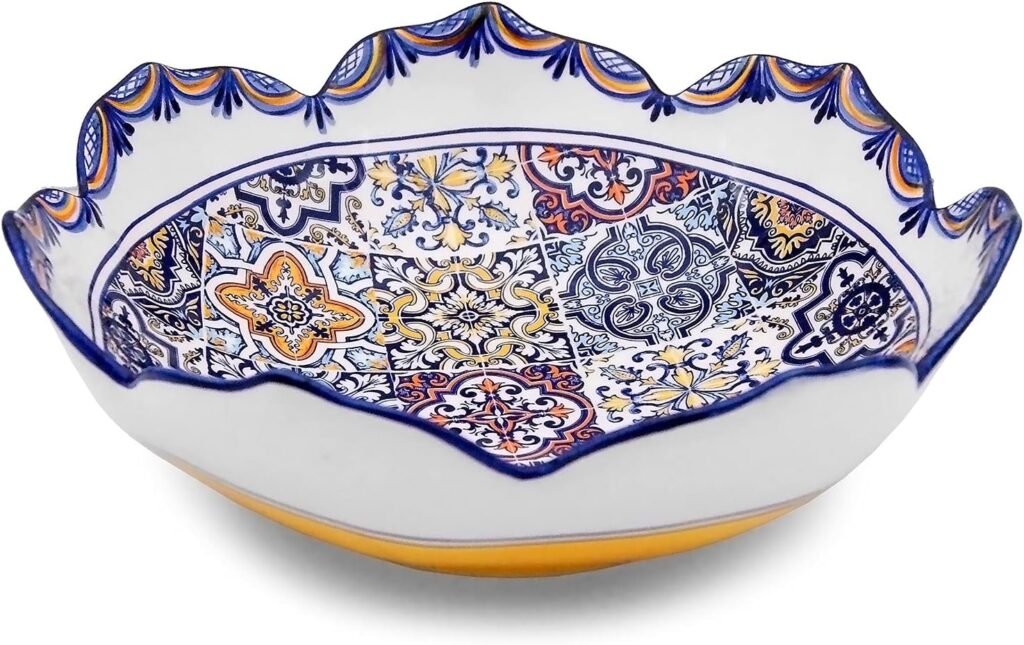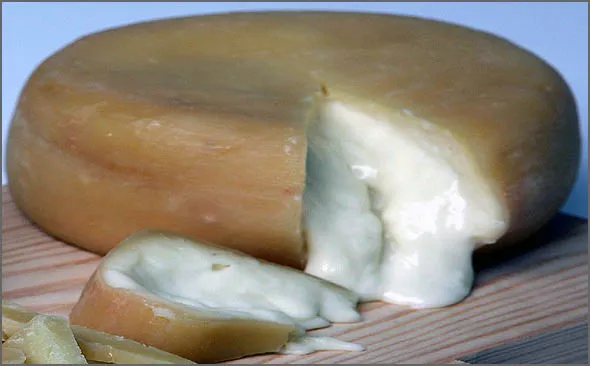Serra da Estrela cheese is a beloved gem of Portuguese cuisine, hailing from the stunning Serra da Estrela mountains. This soft, creamy cheese has a rich history and a unique flavor profile that makes it a favorite among cheese lovers. Whether enjoyed on its own or as part of a larger meal, Serra da Estrela cheese offers a taste of Portugal’s culinary heritage that is hard to resist.
Key Takeaways
- Serra da Estrela cheese is made from sheep’s milk sourced exclusively from the Serra da Estrela region.
- It is traditionally served by scooping out the soft interior with a spoon, rather than slicing.
- The cheese is unique because it uses thistle flowers as a coagulant instead of animal rennet.
- It has been recognized with PDO (Protected Designation of Origin) status, ensuring its quality and authenticity.
- Sustainability efforts are in place to preserve traditional cheese-making practices in the region.
The Rich History Of Serra Da Estrela Cheese
Cultural Significance
Serra da Estrela cheese isn’t just food; it’s a symbol. It represents the cultural identity and pride of the people from the Serra da Estrela region. They’ve held onto their traditions, and the cheese became a symbol of their quality and excellence. The cheese is deeply connected to the region’s identity, reflecting the resourcefulness required to thrive in the rugged landscape. The unique use of thistle, born from necessity, further distinguishes it, making it a true emblem of local heritage. You can explore other sheep’s milk cheeses from Portugal to see how they compare.
Traditional Production Methods
The way Serra da Estrela cheese is made is closely tied to the seasons. From November to June, when the sheep produce lots of rich milk, that’s when the cheese-making happens. The cheese is carefully made and then stored in cool, humid cellars to mature. These cheese wheels were traditionally enjoyed throughout the year, especially during celebrations like Easter, Christmas, and weddings. The use of thistle as a coagulant, instead of animal rennet, is a key part of the traditional process, giving the cheese its unique flavor and texture.
Historical Origins
Pinpointing the exact origins of Serra da Estrela cheese is tough, but its roots go way back. Some think cheese production in the area started as far back as the Roman era, when cheese making was popular across the Iberian Peninsula. Others believe the Arab occupation brought dairy knowledge. What’s known for sure is that Serra da Estrela cheese has been documented since the 12th century, making it the oldest Portuguese cheese. Even back then, it was considered a delicacy and a vital source of income for local farmers.
The production of Serra da Estrela cheese was shaped by both the natural environment and the historical context of the region. The isolated nature of Serra da Estrela meant people had to be resourceful. Cheese production was a way to preserve milk, which would spoil quickly in the cold climate. The use of thistle was a necessity, as animal rennet was scarce.
Unique Characteristics Of Serra Da Estrela Cheese

Texture And Flavor Profile
Serra da Estrela cheese is known for its incredibly creamy texture. It’s so soft that it’s often eaten with a spoon. Forget slicing this cheese; you’re going to want to dig right in. The flavor is rich and buttery, with a slight tang and earthy undertones that make it really special. It’s not your everyday cheese; it’s an experience.
Use Of Thistle Flowers
One of the most interesting things about Serra da Estrela cheese is that it uses thistle flowers to coagulate the milk, instead of animal rennet. This is a pretty old-school method, and it gives the cheese a really unique taste and texture. It’s also what makes it vegetarian-friendly, which is a nice bonus. The thistle adds a subtle bitterness that balances the richness of the sheep’s milk perfectly. It’s a key part of what makes this cheese so special. This traditional process gives the cheese its distinct texture and unique taste.
PDO Classification
Serra da Estrela cheese has Protected Designation of Origin (PDO) status. This means that it can only be produced in a specific region, using traditional methods. The PDO status ensures that you’re getting the real deal, made with high-quality ingredients and following strict guidelines. It’s a guarantee of authenticity and quality, so you know you’re getting a cheese that’s been made with care and tradition. The Portuguese government granted Queijo Serra da Estrela the esteemed Protected Designation of Origin (PDO) status, meticulously defining its production area, methods, and characteristics. This recognition was further reinforced in 1996 when the European Union acknowledged Queijo Serra da Estrela as one of Europe’s finest cheeses.
The PDO classification isn’t just a label; it’s a commitment to preserving the heritage and traditions of the Serra da Estrela region. It supports local farmers and cheesemakers, ensuring that this unique cheese continues to be made for generations to come.
Here’s a quick rundown of what the PDO means:
- Specific region: Only cheese made in the Serra da Estrela region can be called Serra da Estrela cheese.
- Traditional methods: Cheesemakers must follow specific methods that have been passed down for generations.
- Quality control: Strict standards are in place to ensure the cheese meets certain quality criteria.
How To Enjoy Serra Da Estrela Cheese

Serving Suggestions
Okay, so you’ve got your hands on some Serra da Estrela – now what? Forget slicing it up like cheddar. The traditional way is to cut off the top rind and scoop out the creamy interior with a spoon. Think of it like a cheese fondue, but way more personal. You can spread it on bread, crackers, or even just enjoy it straight up. Some people even like to drizzle a little honey on top for a sweet and savory combo. Don’t be afraid to experiment!
- Serve at room temperature to fully appreciate the texture and flavor.
- Accompany with crusty bread or rustic crackers.
- Consider adding a drizzle of honey or a sprinkle of nuts.
Serra da Estrela is best enjoyed slowly, savoring each bite. It’s a cheese that demands attention, so take your time and really appreciate the unique flavors and textures.
Pairing With Beverages
Finding the right drink to go with your Serra da Estrela can really elevate the experience. Locally produced wines are a solid bet. A crisp white wine, like Encruzado, can cut through the richness of the cheese. If you’re more of a red wine person, try something light and fruity, like Jaen or Rufete. For something a little different, fortified wines like Port or Madeira also work well. And don’t count out beer! A Pilsner or Pale Ale can be a surprisingly good match. You can find some unexpected flavors if you experiment a bit.
Regional Variations In Consumption
How people eat Serra da Estrela can actually vary a bit depending on where you are in Portugal. In some northern regions, they’re all about scooping it out with a spoon, as mentioned before. But in the Serra da Estrela region itself, you might see locals just slicing it up and eating it rind and all. It really just comes down to personal preference. There’s no right or wrong way to enjoy this amazing Portuguese cheese.
The Art Of Making Serra Da Estrela Cheese

Ingredients And Sourcing
To create authentic Serra da Estrela cheese, it all starts with the ingredients. The primary ingredient is raw sheep’s milk, and it must come from specific breeds raised in the Serra da Estrela region. These breeds are carefully selected, and their milk is known for its richness and quality. The milk is typically sourced from local farmers who adhere to traditional practices. Another key ingredient is thistle flower extract, used as a coagulant instead of animal rennet. This gives the cheese its unique characteristics. Sourcing these ingredients responsibly is crucial for maintaining the cheese’s authenticity and supporting local communities.
Craftsmanship And Techniques
Crafting Serra da Estrela cheese is an art passed down through generations. The process begins with heating the raw sheep’s milk in large copper vats. Then, the thistle flower extract is added to coagulate the milk, forming curds. These curds are carefully cut and separated, then molded by hand into the characteristic wheel shape. The cheese makers use traditional tools and techniques, relying on their experience and knowledge to ensure the cheese develops its desired texture and flavor. This craftsmanship is what sets Serra da Estrela apart from mass-produced cheeses.
Aging Process
The aging process is a critical step in developing the unique flavor and texture of Serra da Estrela cheese. After molding, the cheese wheels are stored in cool, humid cellars. These cellars provide the ideal environment for the cheese to mature slowly. During aging, the cheese is regularly turned and monitored to ensure even ripening. The aging period can last for several weeks or months, depending on the desired intensity of flavor. The cheese develops its characteristic soft, creamy interior and slightly tangy taste during this time. The aging process is what truly transforms the raw ingredients into the final product.
The cheese is carefully crafted and then stored in cool, humid cellars, where it matures to perfection. These wheels of cheese were traditionally enjoyed throughout the year, particularly during festive occasions such as Easter, Christmas, and weddings, where they graced the tables with their presence.
Here’s a breakdown of the aging process:
- Initial Stage: Formation of rind.
- Middle Stage: Development of creamy texture.
- Final Stage: Intensification of flavor.
Exploring The Serra Da Estrela Region

Geographical Features
Serra da Estrela isn’t just a place where amazing cheese comes from; it’s a whole experience. The geography itself plays a huge role in shaping the cheese and the culture around it. The Serra da Estrela mountain range is the highest in mainland Portugal, and its unique landscape directly influences everything from the sheep breeds to the local culinary traditions. Think about vast, open spaces, perfect for grazing, and a climate that’s just right for aging cheese. It’s a pretty special place.
Local Sheep Breeds
The sheep are the real stars of the show, at least when it comes to making Serra da Estrela cheese. You can’t have the cheese without the milk, and you can’t have the milk without the sheep! There are specific breeds that thrive in this region, and their milk is what gives the cheese its distinctive flavor. These breeds are well-adapted to the harsh mountain environment, and their diet of local grasses and herbs contributes to the cheese’s unique taste. It’s a whole ecosystem working together.
Culinary Traditions
Serra da Estrela cheese isn’t just a food; it’s a part of the local culture. The way people eat it, the dishes they make with it, and the festivals they celebrate around it all tell a story. It’s about family recipes passed down through generations, and about using local ingredients to create something truly special. The cheese is often paired with local wines, and it’s a staple at family gatherings and celebrations. It’s a taste of Portugal, plain and simple.
The culinary traditions surrounding Serra da Estrela cheese are deeply rooted in the region’s history and culture. It’s more than just a food; it’s a symbol of community, heritage, and the unique flavors of the Serra da Estrela mountains.
Here are some common ways to enjoy Serra da Estrela cheese:
- Scooped straight from the rind with a spoon.
- Served with crusty bread or crackers.
- Paired with local wines like Encruzado or Jaen.
- Used as an ingredient in traditional dishes like rancho (a hearty stew).

Serra Da Estrela Cheese In Modern Cuisine
Gourmet Applications
Serra da Estrela cheese has made its way into gourmet kitchens, and it’s not just being served on a cheese board anymore. Chefs are finding creative ways to incorporate its unique flavor and texture into dishes. Think about it: creamy Serra da Estrela melted over roasted vegetables, adding a rich, savory note. Or perhaps as a filling for ravioli, offering a taste of Portugal in every bite. The possibilities are pretty endless. It’s even showing up in high-end restaurants as a key ingredient in sauces, adding a depth that’s hard to replicate with other cheeses. The versatility of this cheese is really shining through.
Fusion Dishes
Fusion cuisine is all about blending different culinary traditions, and Serra da Estrela cheese is proving to be a surprisingly good fit. Imagine a Portuguese-inspired take on Italian risotto, where Serra da Estrela replaces Parmesan for a creamier, tangier finish. Or how about using it in a quesadilla, pairing it with Mexican spices for an unexpected twist? These kinds of experiments are pushing culinary boundaries and introducing Serra da Estrela to a whole new audience. It’s not just about tradition anymore; it’s about innovation. You can even find it in some modern cheese latkes recipes.
Cheese Festivals And Events
Cheese festivals are a big deal, and Serra da Estrela is often a star attraction. These events provide a platform for producers to showcase their cheese, and for consumers to learn about its history and production methods. You can usually find:
- Tasting sessions where you can sample different ages and styles of Serra da Estrela.
- Cooking demonstrations showing how to use the cheese in various dishes.
- Workshops on the art of cheese making, offering a hands-on experience.
These festivals aren’t just about eating cheese; they’re about celebrating a cultural heritage. They bring together producers, chefs, and cheese lovers from all over the world, creating a vibrant community around this iconic Portuguese cheese.
It’s a chance to connect with the people who make the cheese and appreciate the craftsmanship that goes into every wheel.
Sustainability And Preservation Efforts

Slow Food Movement
The Slow Food movement plays a big role in keeping Serra da Estrela cheese production alive. It’s all about protecting traditional foods and the ways they’re made. For Serra da Estrela, this means supporting the small farmers who still use the old methods, like thistle rennet and raw sheep’s milk. It also means fighting against mass-produced imitations that just don’t measure up in quality or taste. The movement helps consumers understand what makes the real deal so special, which in turn helps keep the tradition going.
Challenges Facing Traditional Cheese Making
Making Serra da Estrela cheese the old-fashioned way isn’t easy. There are a bunch of challenges that these cheesemakers face:
- Climate Change: Unpredictable weather can mess with grazing patterns and milk production.
- Economic Pressures: It’s tough to compete with cheaper, mass-produced cheeses.
- Aging Population: Fewer young people are taking up the craft.
These challenges make it hard for cheesemakers to keep doing things the way they always have. It’s a constant balancing act between tradition and survival.
Community Initiatives
Local communities are stepping up to protect Serra da Estrela cheese. They’re doing things like:
- Organizing cheese festivals to promote the product.
- Creating educational programs to teach young people about cheesemaking.
- Working together to get better prices for their cheese.
These efforts are super important because they help keep the tradition alive and make sure that future generations can enjoy this amazing cheese.
Final Thoughts on Serra da Estrela Cheese
In the end, Serra da Estrela cheese is more than just a tasty treat; it’s a slice of Portuguese culture. Whether you’re scooping it out with a spoon or slicing it up, this cheese brings a unique flavor that’s hard to forget. It’s got a history that connects people to the land and traditions that have been passed down for generations. So, next time you’re in Portugal or at a local cheese shop, don’t miss out on trying this gem. Pair it with some good bread and a nice glass of wine, and you’ll be savoring a true taste of Portugal.
Frequently Asked Questions
What is Serra da Estrela cheese made from?
Serra da Estrela cheese is made from the milk of sheep that graze in the Serra da Estrela mountains.
How should I eat Serra da Estrela cheese?
You can scoop it out with a spoon, or slice it and eat it with bread or crackers.
Is Serra da Estrela cheese vegetarian?
Yes, it is vegetarian because it uses thistle flowers instead of animal rennet.
What makes Serra da Estrela cheese special?
Its unique flavor comes from the use of thistle flowers and the specific sheep breeds that produce the milk.
Can you tell me about the history of Serra da Estrela cheese?
This cheese has a long history, dating back centuries, and is an important part of Portuguese culture.
How is Serra da Estrela cheese classified?
It has a Protected Designation of Origin (PDO) status, meaning it must be made in a specific way in a certain area.


